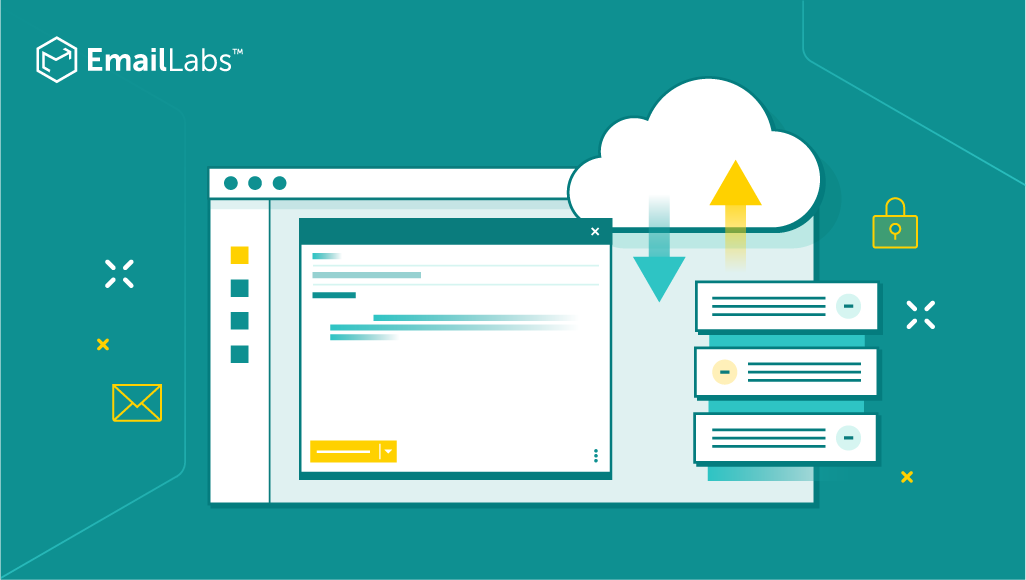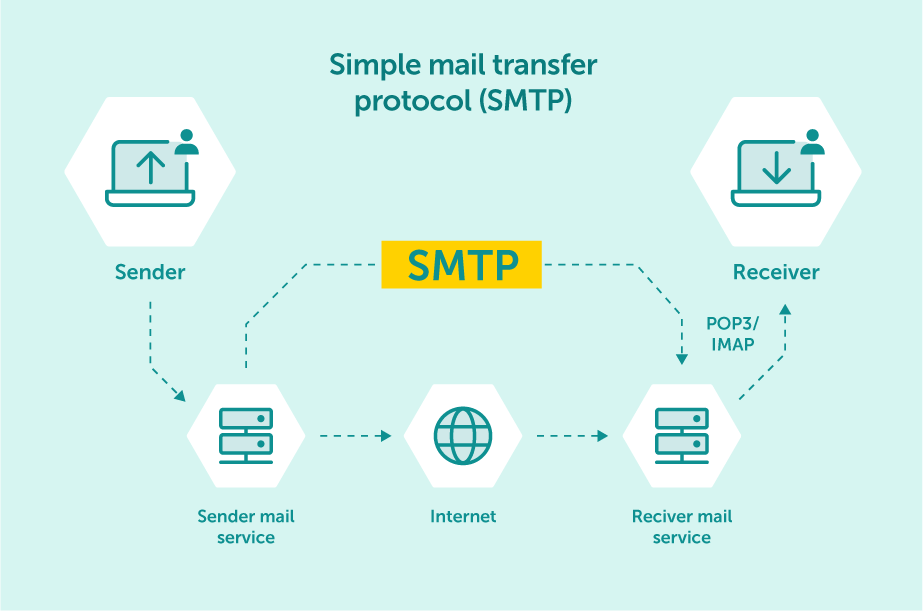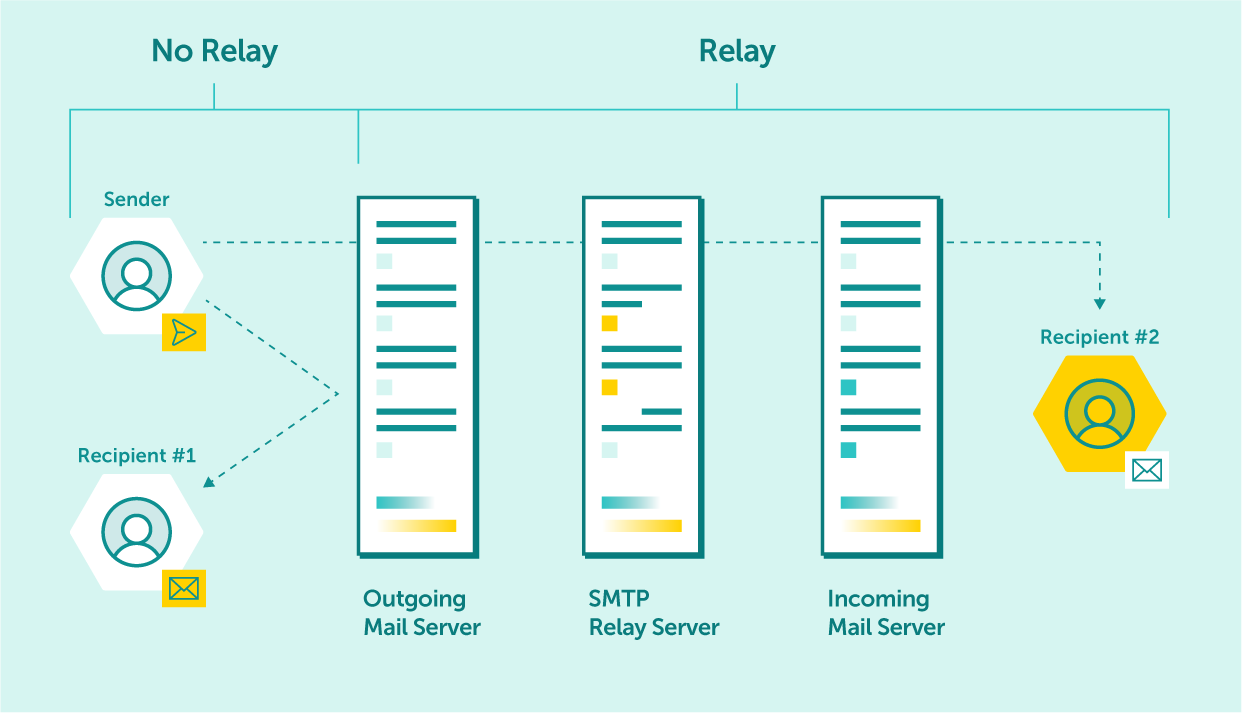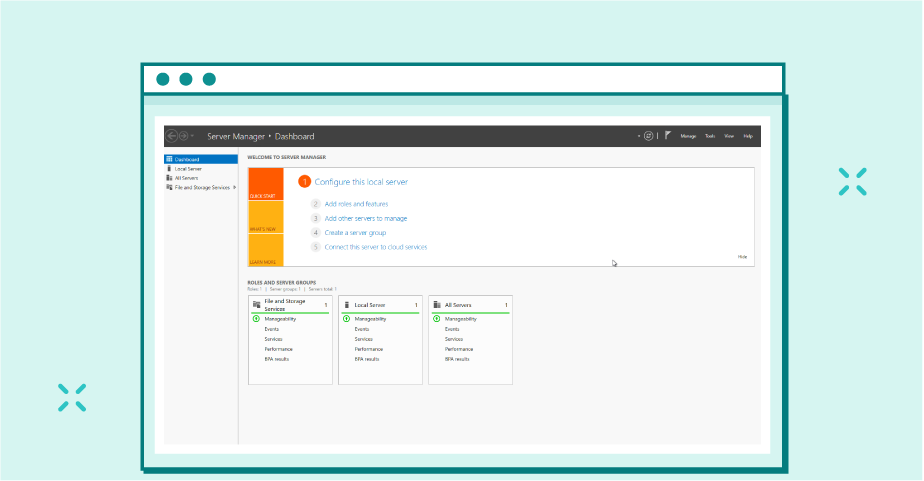
At this point, it is safe to say that most communication between individuals and organizations is done via email. With that, many companies resort to using third-party providers, and it’s easy to understand why. Using Google Workspace and your own domain can significantly improve your email deliverability rate.
Yet, there are still some companies and individuals who would like to have more control over their infrastructure, including their own email servers. The reasons why deserve a discussion of their own – this guide will focus primarily on creating email servers for your organization.
Below, you’ll find a concise guide on the basics of SMTP servers, along with a brief outline of the steps required to set up your own SMTP server. Read on and see how you can start sending messages from your email server in no time.
And if you feel you’re not up for the challenge, you can contact us – we’ll gladly take care of everything for you!
In short, an SMTP server (Simple Mail Transfer Protocol) is an email server that’s responsible for sending, receiving, and routing emails. The main difference between SMTP and cloud-based solutions lies in the way your email service handles messages.

SMTP is an email communication protocol that is used by mail servers to send emails from one account to another via the internet.
Maximize your email deliverability and security with EmailLabs!
With a standalone SMTP service, your emails travel from your relay host to the recipient’s mail server without any third-party involvement. This leaves you with a few options:
It should be noted that large email service provider or mailbox provider, such as Gmail, Yahoo, and Outlook, filter the messages according to IP addresses and domains, which may affect your email deliverability, so it is a good idea to forward emails to an established SMTP relay server.

SMTP relay is the process of routing emails to the proper destination SMTP server.
On top of that, configuring your application to send emails using a smart host with a queueing mechanism can provide improved stability and increased bandwidth. If there is a connection loss or high load, for instance, the email transmission will gradually resume after the connection is re-established, preventing system overload.
Setting up an SMTP server may sound like a daunting task, but if you have any experience with hosting a website, the process should be a breeze.
Assuming that you want to set up your own SMTP server from the ground up, you will need is a server with a domain connected to the internet, either a VPS or a dedicated server.
Once you have the basic infrastructure in place, you’ll need to install and configure appropriate software such as postfix for Linux or Microsoft’s IIS SMTP server for Windows.
The first step is to choose the right platform. The two main options are Windows and Linux, and if you’re not familiar with either of these platforms, opting for Windows Server may be a better idea. The platform is designed for businesses of all sizes and comes with a user-friendly interface and a multitude of apps, all in one package.
On the other hand, Linux is a more versatile platform that can be used for a wide range of purposes, including SMTP servers. The main advantage of Linux is that it allows for virtually unlimited customization, which can be a blessing and a curse.
While you can tailor the server to your specific needs, the process can be complicated and time-consuming. Additionally, Linux servers may turn out to be more expensive than their Windows counterpart in the long run, as you may need to invest in additional software or support to get the most out of your server.
Next up, you need to set up the SMTP service on your server. If you’re using Windows, the process is relatively straightforward – all you need to do is add the SMTP Server feature in Server Manager. More specifically, you need to:

Server Manager is a management console that helps IT professionals provision and manage both local and remote Windows-based servers.
On Linux, the process is a bit more complicated, as there’s no one-click installation wizard. The first step is to install Postfix, the most popular open-source SMTP server for Linux. The process varies depending on the distribution you’re using, but usually, you need to:
After the server is up and running, you need to configure the SMTP service to start sending emails. If you’re using Windows, all you need to do is open the Internet Information Services (IIS) Manager console and enter the SMTP Virtual Server settings. There, you should set up the following:
On Linux, the process is similar, but most of it happens in your text editor. Assuming you’re using Postfix mentioned earlier, you need to edit a few files in the /etc/postfix/ directory. Take a look at our For developers section for specific instructions.
Maximize your email deliverability and security with EmailLabs!
Once you have your server configured, it’s time to test your setup. The most common way to do that is by using Telnet to send a test email, which can be used on both Windows and Linux. The process is relatively simple – all you need to do is open the Telnet client and connect to your SMTP server.
Your typical telnet test should consist of four steps.
Assuming the configuration is set up correctly, you will receive a positive response from your server after sending the message. If there are any errors, you should troubleshoot your configuration and try again. If the session ends with a success message, you can now start sending emails from your own email server.
Unfortunately, there aren’t many things in the world of IT that are set-and-forget – and while it may seem so, your SMTP server isn’t one, either. Just like any other piece of software or hardware, your server will require regular maintenance to keep it running smoothly.
However, this isn’t to say that once you set up the SMTP service, you’ll have to dedicate a significant amount of time to managing the server. Conversely, if you follow the best practices and use a reliable server, the maintenance shouldn’t require more than an hour or two per week, often embedded in your overall server maintenance routine.
There are two main pain points when it comes to SMTP servers – security and performance. The first one is relatively easy to solve, and if you follow the proper security protocols, you should have no trouble keeping your server safe – again, your SMTP server is a part of your local network infrastructure, so the same rules apply.
As for performance, things are a bit more complicated. Although sending emails is effortless for modern computers, scaling an SMTP server to handle increased traffic is more complicated. For example, if you plan to send mass emails, you may need to schedule them accordingly or invest in additional hardware and software, such as a caching server or a content delivery network (CDN).
You can also use SMTP monitors that periodically test your server’s performance and identify potential issues. Common symptoms of a poorly configured server are high latency and delivery failures. If you experience either of these issues, you should investigate your SMTP settings and make the necessary changes.
Setting up an SMTP server is no rocket science, and if you have some experience with web hosting, the process should be a breeze. All you need to do is pick the right platform for your needs, install the necessary software (Windows or Linux), configure your server accordingly, and test it before sending emails.
However, keep in mind that running an SMTP server requires regular maintenance – from setting up proper security protocols to optimizing performance. If done correctly, though, having your own email server can significantly improve the inner workings of your organization and help you stay in control of your infrastructure.
If you don’t feel confident – It’s better to leave it in the hands of professionals – so don’t hesitate and contact us. We will take care of everything.
We live in a world where your customers switch seamlessly between laptops, smartphones, and tablets. They navigate a complex digital ecosystem – checking emails, using mobile apps, and reacting...
We are delighted to announce that Vercom S.A., the company behind the EmailLabs project, has successfully completed the ISO 22301 certification process. This significant achievement underscores our commitment to...
EmailLabs, as part of the Vercom group, proudly announces its full commitment to aligning its ICT services with the latest cybersecurity standards. In response to dynamically changing regulations, the...
We are pleased to announce that MessageFlow, a product from the Vercom S.A. group, has received the prestigious CSA (Certified Senders Alliance) Certification. This recognition not only underscores the...
Gmail, Google and Yahoo's Requirements
You might have noticed a new item in your Gmail sidebar recently – the “Manage subscriptions” tab, often flagged with a blue notification dot. While Google announced this feature...
IT & Tech, Pytania i odpowiedzi, Technical
Efficient email communication isn’t just about sending messages — it also involves integrating email functionality into your business systems and applications. Email APIs (Application Programming Interfaces) serve as the...
One of the most important yet often underestimated elements in shaping a company’s brand perception is the transactional email. In e-commerce, the design of such messages must be carefully...
Gmail, Google and Yahoo's Requirements
You might have noticed a new item in your Gmail sidebar recently – the “Manage subscriptions” tab, often flagged with a blue notification dot. While Google announced this feature...
IT & Tech, Pytania i odpowiedzi, Technical
Efficient email communication isn’t just about sending messages — it also involves integrating email functionality into your business systems and applications. Email APIs (Application Programming Interfaces) serve as the...
One of the most important yet often underestimated elements in shaping a company’s brand perception is the transactional email. In e-commerce, the design of such messages must be carefully...
Google and Yahoo's Requirements, Yahoogle
2024 brought fundamental changes to email marketing, introducing new, stringent requirements for senders. Since February 1, 2024, Google and Yahoo have started enforcing new deliverability rules, primarily targeting bulk...
We live in a world where your customers switch seamlessly between laptops, smartphones, and tablets. They navigate a complex digital ecosystem – checking emails, using mobile apps, and reacting...
Are your campaigns not engaging all recipients as you expect? Do they fail to open your emails or click on links, lowering your campaign effectiveness and email marketing ROI?...
Gmail, Google and Yahoo's Requirements, Updates
Gmail’s educational phase has ended. Google has officially announced the start of a new phase – the Gmail Enforcement Phase – which begins to take effect in November 2025....
Running a business requires professional communication channels. While free personal email services might work for individual use, they fall short when representing a business. Understanding the fundamentals of email...
Email routing requires sophisticated mechanisms to ensure messages reach their intended recipients across the vast landscape of the internet. At the heart of this email delivery system lies the Mail...